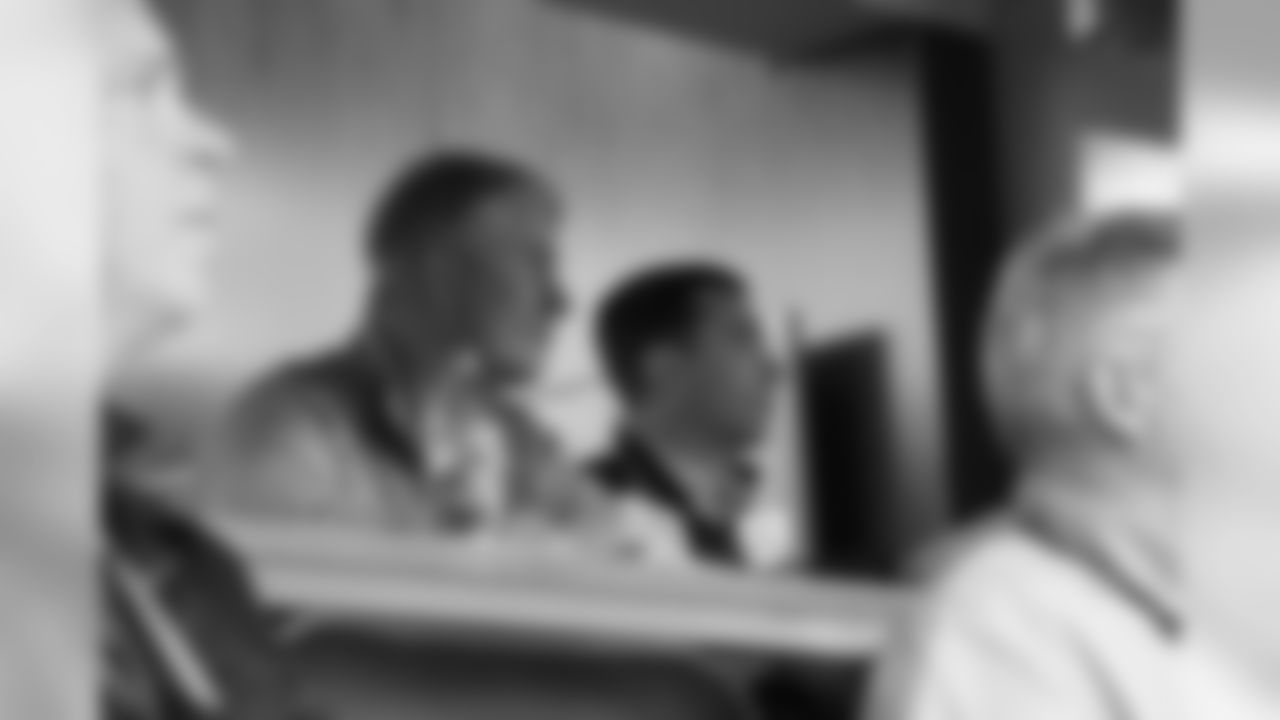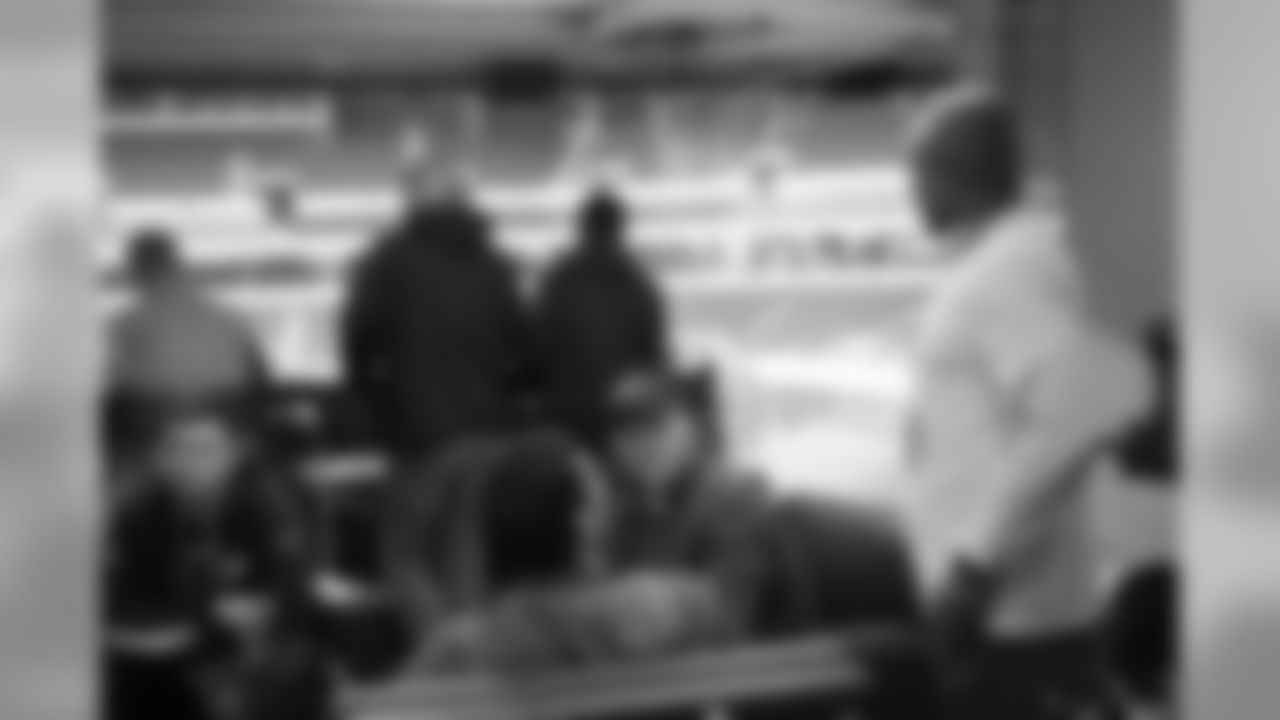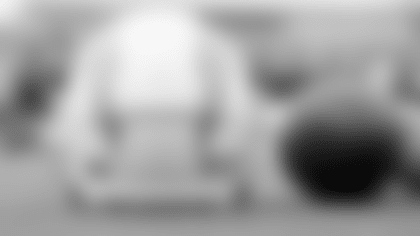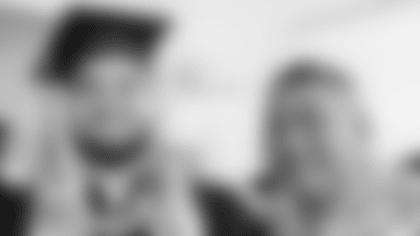A peek inside the Chargers suite at Lucas Oil Stadium for the 2016 Scouting Combine.











The final installment in our three-part fan Q&A session with General Manager Tom Telesco at the NFL Scouting Combine.
Tom, what would you say to skeptics (who don't have the inside track on the goings on at Chargers Park) who criticize our trading away of fourth round picks recently? Shouldn't we be building depth? Thanks! - Cory P.
Telesco:I worry more about what we're getting than what we're losing. Sometimes you've got to give up some quantity for quality, too. Every situation is different, and there aren't any hard rules. Now, we do want to build depth, but we aren't the first team who traded away a fourth round pick to move up to get somebody. I believe you don't want to ever scout scared. If you see somebody that you think can really help you, and it takes a little something to get him, you go do it. You try to make sound, responsible decisions. Obviously we aren't looking to give away picks, but sometimes you have to do what you have to do.
Do you look for someone who can immediately contribute with a first round pick, or do you look more at potential? – Scott Allen
Telesco:That's a tough question nowadays because a lot of the college players where they are coming from just aren't ready to go from day one. So, there is still a lot of player development involved even when you pick a guy with the first pick in the draft. There is still a lot of development that is necessary. So you'd like that guy to come in and contribute, and then grow in that role as he gets older. There are a lot of players who are Pro Bowlers right now, but that first year weren't at that level. But they still came in and contributed. They had their role and then grew in it, so you have to look at it both ways.
What do you look for in a possible free agent target? – Devon Drake
Telesco:Number one is fit. Football is not like baseball where players can go from team to team, and there is no real scheme you have to fit into. In football, we have offensive and defensive schemes in place. They have to be able to fit into what we do, otherwise it probably isn't going to work out for a free agent. That is number one, and then after that, it is everything you look for in a player you draft. We want guys who are durable, smart and tough.
How much does the scheme a college player came from affect your draft board? - Kyle Larken
Telesco:That's a good question. You'd like to have it not affect your draft board because you've got to project him to what he can do for you and how he fits in at the NFL level. Now, it may affect once you get him when he is on the field contributing. It takes some players a little bit longer than others to get on the field and contribute for us. But as far as the draft board, we've got to put him up there where we think he projects to us and what his talent level is going to be. We can't just say that an offensive tackle who has always been in a two-point stance and in pass protection can't ever get into a three-point stance and come off the ball. We have to look at all the traits and the physical abilities he has, and then we project forward.
You said at the press conference earlier in the year that you would look at reasons why the o-line suffered so many injuries. I think you called it not common. You also said you thought our team was cutting edge in injury prevention/recovery. What have you guys been doing to research injury prevention/recovery, especially on the line? – Cyrus Wooten
Telesco: We have been looking at every aspect, and we research injury prevention and recovery for every position every year. It's not just the offensive line. It is such a big part of putting a roster together. But when we looked at the offensive line in particular, there was no common theme to those injuries last year. That is kind of what I anticipated, but we still went through all the research to see if there was a common denominator. We still have a number of months to go, and we will keep studying injury prevention and treatments. Our strength coach is doing a good amount of research from around the country, so we are doing everything we need to do to get our players to stay on the field longer. And if they do get injured, doing everything possible to get them back on the field quicker. That is never ending.
Can you describe what the moments are like when the Chargers are on the clock? What thoughts are running through your head and is it stressful? – Melvin Garcia
Telesco:We do so much preparation and work that I certainly wouldn't call it stressful because we have a plan set up for whatever scenario comes into play. We know what we are going to do. The much more stressful part is on game day when you watch a kick go through the uprights or wait for Philip Rivers to release a pass on third down. But as far as draft day and when you are on the clock, if you prepare enough there really isn't any pressure there.
Hi Tom. There are so many players attending the Combine do you actually see every single player drill, or is it spread around among the scouts? If spread out, what is the process like when they follow up with you? Thanks. - Joey Quinones
Telesco:Jeff Foster who runs the Combine for National Football Scouting does an incredible job with logistics and setting everything up. He has it set up where we will physically see every player workout. You won't miss anybody, and that's great because when we come here, we are coming to still scout everybody. We aren't here just to look at 50 or 60 players. We are here to look at every single one of them, and then we will narrow it down after that.













